This article was written by Ely and contains her favorite party games that she has enjoyed with her gaming group.
The list contains references and links to some party games for adults.
Now let’s see what Ely recommends for easy to teach party games.
(Related List: These easy to learn board games are great for playing at your next party!)
Save a Party with these 5 Easy to Teach Party Games
Maybe it’s your party or one you’re attending, but things have gotten quiet.
You’ve run out of things to say about what you’ve been up to, your job, and how good the food is.
You look around the room and see people checking the time or their tweets. Others have begun to eye the TV and talk about Netflix and Youtube.
There’s one moving ever closer to the door and saying things like their “cats might be bored” and they “should really check up on them.”
Whether the party hasn’t gotten started or is dying a premature death. Sometimes all it needs is a nudge in the right direction to turn things around.
Be a hero and save the party with one of these 5 easy to teach party games!
Let’s start the list off with one of my group’s favorites…
1. Concept – Easy to Learn Party Game for Problem Solvers
Easy to Teach – 1/5
Game Category- Party and Deduction
Number of Players – 4-10 Suggested (Can work with 2 or 3 with little modification)
Suggested Age – 10+
Adults Only Version – Not Currently. See “House Rules”
My Experience:
For the past year this has been one of my group’s go-to games. It’s a great party game that rewards players deduction skills.
Think of it as “charades” for those of us who don’t want to get up and dance around the room acting out motions. Compared to Charades it is a little lower energy, but there are several plus sides to that.
You need less room, but best of all I find it a lot it easier to get people involved because there’s less performance pressure for those who are self-conscious.
The rules are simple: The active player draws a card and chooses one of 9 “Concepts” from the card.
What follows is somewhat like reverse 20 Questions. Rather than answering questions about the Concept, the active player places tokens on small icons such as Man, Woman, Group, Object, “Saying, Idea, or Phrase,” Historical, Fictional, Colors, Numbers, and so on.
Like Charades, the person conveying the Concept is not allowed to talk.
The first player to guess the Concept correctly wins the points for that concept. More difficult or abstract Concepts are worth more points.
My favorite part about this game is how different people choose to get the Concept across to others. There’s no correct way to do it, just different ways to attempt it.
Since not everyone thinks the same, things you might think are complex can be easier than you think. And other times something that seems obvious to you leads to the other players throwing out guesses that are increasingly off the mark and absurd.
One round people gave me answers such as “Currency comes from the dirt!” and “Dirty Money!” before someone finally landed on the phrase “Money Doesn’t Grow On Trees.”
Our “House Party” Rules:
- The official rules have teams, but we tend to play as individuals and the game holds up just fine
- We don’t bother keeping track of scores, we give the card to the person who guessed it as a “point” for bragging rights but we just play for fun until we go around the table several times or we’re ready to move onto something else
- People can jump in or out of the game at any time – it’s a good one for people to jump in for a round or two and then get back to socializing
- The suggestion cards from the deck are great, but this is an easy one to write your own suggestions down as well in order to customize it for your group.
- If your group is looking for an “After Dark” Version you can use cards from Cards Against Humanity or Telestrations After Dark
Up next we have the incredibly fun party game that is like Telephone, but with quick illustrations!
2. Telestrations – Wacky and Fun Party Game for Kids and Adults
Easy to Teach- 1/5
Game Type – Party, Line Drawing
Number of Players – 4-10
Age: 12+
Adults Only Version – Yes. Telestrations After Dark
My Experience:
This game is so easy to teach and so much fun to play! The perfect party game for kids and adults to enjoy together.
The idea is simple.
Everyone gets a dry-erase notepad, a dry-erase marker, and a word. You sit in a circle, write down your word, and then pass it to the left.
That person reads the word, flips the page, and draws a doodle on the next page representing the word. At the same time, you receive the word from the person to your right and do the same thing.
You pass the pad again and this time you receive a pad with a doodle.
You flip the page and write down your guess of what the doodle represents, then continue passing the pads to the left.
The pads are passed around the circle until all players have their original pad back. At this time, everyone takes it in turn to flip through their pads and show the progression to the group, starting with their original word and going through doodles and guesses until they reach the final guess.
If the final guess matches the original word, you get a point.
At that time you also get to assign points to other players based on your favorite guess and your favorite drawing.
A note for people who “can’t draw”:
We had a couple of people that were shy of playing at first because they “couldn’t draw.”
Their intimidation wasn’t totally unwarranted, as my gaming group does contain a couple of professional artists. However, there was no advantage (or disadvantage) towards artist skill when it came to winning or enjoyment.
Each round of doodling or guessing is only 90 seconds long. So the goal is to get the point across as quickly and efficiently as possible.
There is no time to make a masterpiece. Stick figures are everyone’s best friend.
As a result of this time crunch, misunderstandings, and confusing drawings are going to happen, but they’re just part of the fun. Favorite submissions are rarely awarded based on drawing skill alone and are more often awarded for being funny, silly, cute, clever, surprising, or off the wall.
This game is more fun to participate for the whole round because everyone is engaged in drawing or guessing for the first half. I highly encourage getting all players in on the first round rather than watching.
However, if anyone is still intimidated or has reservations, make sure they are around for the “reveal” at the end. People’s fears quickly melt away because it was so much fun and they realize “I can do that!”
House Rules:
- We often like to work our way through the reveal “backwards”, showing the end guess first then working our way back to the original…it seems to have more of a “surprise” or laugh factor, and keeps people guessing if the word was correct.
(Related – Ever thought about making a board game? Get the answers to many questions new board game designers have here.)
3. Red Flags – Interesting Storytelling Card Game Great for Adult Parties
Easy to Teach- 1/5
Game Type – Party, Cards, Storytelling
Number of Players -3-10
Age: 16+
Adults Only? Borderline. The base deck is fairly tame, but does mention adult activities.
My Experience:
This is a fun game to play around the coffee table or the kitchen table. It works well with small to medium sized groups.
The Active player is called the “Single” and everyone is trying to set them up on a date.
They do this by playing two “positive traits” and telling you how great this person would be to go on a date with. However the person to your left plays a negative trait called a “Red Flag” on the imaginary date and explains why you really shouldn’t go out with that person…and should instead go out with THEIR suggested date and the trend continues around the table.
Once all the prospective dates are “on the table” the single must decide which date they will accept.
I did have a good amount of fun playing this with my usual group. Since we know each other pretty well, there were opportunities to make compelling arguments to our beverage loving friend that their date could “get them free drinks anywhere, for life”.
And strategic plays such as saving the red flag card that refers to their “pets as their babies, always”. And then playing it for the person that is not so fond of cats.
However, you don’t have to know people well to play, in fact you might learn a lot about them!
The biggest complaint I had about the game is that some of the red flags are basically going to result in a flat out “no” and didn’t lead to much conversation.
3 Example “Red Flags” from a round I played:
Calls you by Ex’s name – Every time.
Each half of their face is completely different, but both are very attractive.
Is Always Plotting to Kill YouAnd 3 silly arguments for the “Red Flags”:
“You could change your name.”
“Each half is hot, only look at them from the side.”
“They’re always PLOTTING to kill you, but aren’t actually attempting it.”
House Rules:
I think it is a game worth playing, but perhaps consider allowing people to trade out cards from their hand that just don’t jibe with the group, since the game’s purpose seems to be that of a conversation starter.
I recommend getting expansions if this is the type of game your group would like. The cards are funny and combining them in different ways can freshen them up a bit, but more cards are better and will keep the ‘surprise factor’ going longer.
And Don’t forget the Expansions!
Here are several expansions Ely recommends:
Dark Red Flags
Nerdy Red Flags
Sexy Red Flags
4. Before I Kill You, Mr. Spy… – Inexpensive Party Game for Spy Theme Lovers
Easy to Teach- 1/5
Game Type – Party, Cards, Storytelling
Number of Players – 3-10
Age: 12+
Adults Only? – No. It’s a game of ‘maniacal villains’ catching spies with silly names. But it’s more tame than Austin Powers or Bond…even if there might be sharks with lazers on their heads.
My Experience:
While this game is simple, it has a few more rules to learn at first than most others on the list. It’s best if someone already knows it and can teach it to the new players.
The rounds go quite fast so I feel like the best way to learn/play is going through a practice round with the group. The subsequent games go a lot quicker, thus this can make for a good warm-up game if people are milling around and are still prepping food and drinks.
This fun party game involves drawing cards from the deck and playing them face-up or face-down before you. These cards represent your evil lair and its strength. Playing them with their values face-up makes your lair more powerful more quickly, but could put it at risk of being sabotaged by the other mad geniuses.
Once your lair is powerful enough, you can play Spy cards on it to trap and murder various dashing secret agents, which is how you earn points.
However, upon playing a spy you can also play a Taunt card, which is representative of the beloved trope of Evil Gloating.
The card even includes text you can read aloud such as “Before I kill you, Mister Spy, I will explain to you my entire life story, because I feel that you are the only one in the world who can understand me.”
Successful Taunting results in scoring double-points for killing that Spy. If you have multiple Taunt cards, you can play more than one, doubling your points each time.
However, every Taunt has a matching card in the deck, and the other players can interrupt your turn to play a Taunt that matches one you have played and free your Spy.
The Spy escapes while you were doing your Evil Gloating and flees to the discard pile, and no points are scored. Once the deck has been exhausted, points are tallied, whoever has the most points wins.
This game is a bit more involved than the others on this list and there is some strategy involved, but the Taunt rules also add a “Press Your Luck” element.
In my opinion, the best part of this game is the theme and reading the monologues out loud–ham it up and even the observers will have a good time for a round or two.
We don’t play this one extremely often, but for the price it is definitely a worthy addition to round out the collection.
(Have a board game idea in your head? Take the first step to making your game here)
5. Joking Hazard – Easy to Learn Card Game with Crude Humor
Easy to Teach- 1/5
Game Type – Party, Card, Hand Management
Number of Players – 3 – 6
Age: 17+
Adults Only Version? – This game is only for adults, no “Family Version”
Note to Buyers:
First off, this game is made by the creators of the web comic “Cyanide and Happiness.” Despite it being a Cyanide and Happiness game, you do not need to be familiar with the comic to play it. You won’t be missing out on any context.
Second, this is not a kids game. And probably not something you should play with your grandma! Teens will probably like or ask for this game, however, so if you’re thinking about picking it up for a teen I suggest you play a game or at the very least look through the cards to decide if you feel it is appropriate.
The characters are just a step above stick figures so it’s more “graphic” than “explicit” but still very adult in nature.
My Experience:
I had heard good things about this from my friends. I tried not to go in with preconceived judgments but I did wonder it would be a one-trick pony and that the novelty of the pictures would wear off quickly.
Thankfully, I was wrong.
Joking Hazard has similarities to Cards Against Humanity which I really enjoy.
Cards don’t get “stale.” Even if you’ve seen them before, the cards almost always appear in a new (and often appalling) context and combinations that kept them interesting.
It is simple enough to learn as you play. You can get a whole table playing in less than 5 minutes.
In Joking Hazard, each card represents one panel of a 3 panel comic.
At the start of each round,
- The Judge draws the first panel randomly from the deck.
- Then picks a card from their hand to place as the second panel.
- At this time, the other players submit a card from their hand face-down to the Judge for what they think would make the best 3rd and final panel of the comic strip.
- The Judge collects the submissions, displays them for the whole group to see, and then picks the winner.
That player gets the point for the round, then the next player in the circle takes their turn as Judge. The first player to 3 points wins.
I feel the structure of the game makes the turn to Judge more interesting because the Judge has some input over which direction the joke goes.
Alternate “marathon” playstyle.
In this mode, everyone takes turns placing a card from their hand to make a never ending comic strip.
The one stipulation is that whatever you play has to make sense in the context of what came before it.
So the table can vote to veto the submission and make the player draw two cards. Alternatively, if the player does not feel they have a good match, they can discard a card and then draw two more cards.
The game goes until a player successfully empties their hand.
I felt this was as much fun as the official rules, and we played at the end of a regular session to finish it off.
If you don’t like crude humor, then skip this one.
But otherwise it’s a great addition to any party game collection.
What Party Games Do You Enjoy Playing as an Adult?
These are only 5 of the many games I’ve added to my Board Game Collection in the last year. However, I wanted to highlight Party Games because I love how their casual nature makes people feel comfortable participating.
I’d love to hear about your go-to party games and house rules in the comments below. I’m always looking for new games to spring on my friends!
Want to See More from Streamlined Gaming?
See How to Sell a Physical Product through Amazon
Print Out your Own Cards for Games at Home
Or Find a New Bluffing Card Game


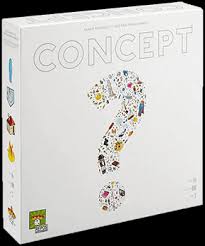
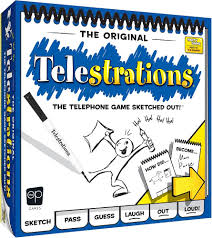

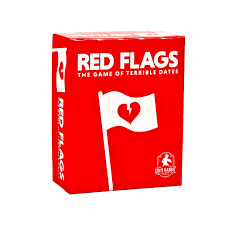
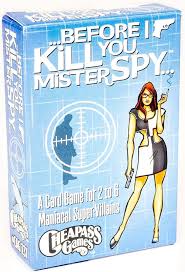
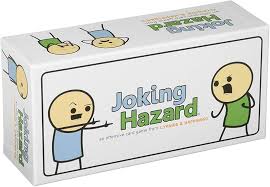
gate io
I read this piece of writing fully about the comparison of most recent and preceding technologies, it’s remarkable article.
gate io
Your article helped me a lot, thanks for the information. I also like your blog theme, can you tell me how you did it?
gate io
Your article helped me a lot, thanks for the information. I also like your blog theme, can you tell me how you did it?
nimabi
Thank you very much for sharing, I learned a lot from your article. Very cool. Thanks. nimabi
binance US registrieren
Your point of view caught my eye and was very interesting. Thanks. I have a question for you.
b^onus de registro na binance
Your point of view caught my eye and was very interesting. Thanks. I have a question for you.
Michele Chick
It is a pleasure to read this weblog, thanks to its up-to-date information and interesting posts. Look into my web page QH5 for some really good points and find out more about Car Purchase.
20 Board Game Types (with Examples of Each) - Streamlined Gaming
[…] 11. Party Games that are Usually Simple and Easy to Learn […]
14 Clever Inference and Deduction Games that Test Your Wits - Streamlined Gaming
[…] Board Games Kids Enjoy 5 Fun Party Games to Show Your Friends 3 Reasons You Should Make Your […]
criar conta na binance
Thank you for your sharing. I am worried that I lack creative ideas. It is your article that makes me full of hope. Thank you. But, I have a question, can you help me?
Best Board Game Storage Solutions for Organized Playrooms (2025 Guide) - Streamlined Gaming
[…] Great for: Keeping travel games and small party games in easy reach. […]
🧠 10 Best Memory Board and Card Games to Boost Brainpower (2025 Edition) - Streamlined Gaming
[…] 🔹 Great for: Quick thinking, short-term memory, party game […]
AMP币
Thank you very much for sharing, I learned a lot from your article. Very cool. Thanks.
Paglikha ng Binance Account
Your point of view caught my eye and was very interesting. Thanks. I have a question for you.
Top 10 Streamlined Gaming Posts of the Past Year - Streamlined Gaming
[…] If you’ve ever struggled to categorize a game—or want inspiration for your own design—this post breaks down 20 common board game genres with examples like Eurogames, deck builders, and party games. […]